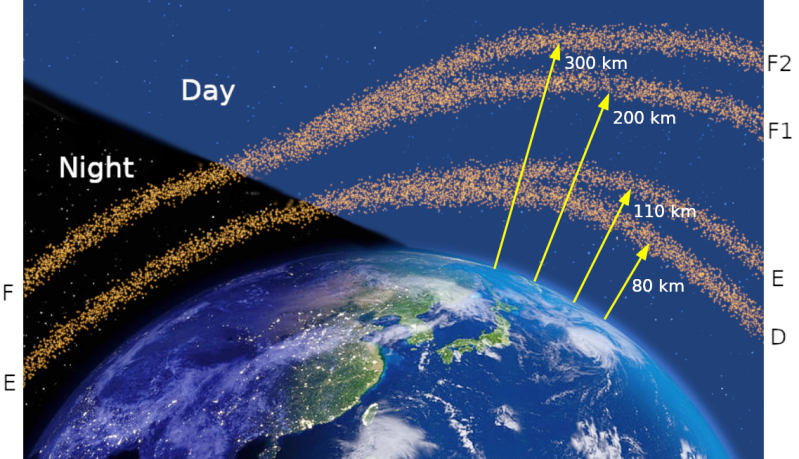The Earth’s ionosphere is the ionized upper part of the atmosphere, and it’s also the most dynamic as it swells and ebbs depending on whether it’s exposed to the Sun or not. It’s the ionosphere that enables radio frequency communications to reach beyond the horizon, its thickness and composition also affects the range and quality of these transmissions. Using this knowledge, a group of ham radio operators used the October 14 solar eclipse to crowdsource an experiment, as part of the Ham Science Citizen Investigation (HamSCI) community.
A solar eclipse is an interesting consideration with ionospheric RF transmissions, as it essentially creates a temporary period of night time, which is when the ionosphere is the least dense, and thus weakening these transmissions and their total range. As with previous solar eclipses, they turned it into a kind of game, where each ham operator attempts to contact as many others as possible within the least amount of time. Using the collected data points on who was able to talk to whom on the globe, the event’s effect on RF transmissions could be plotted over time. For the August 21, 2017 solar eclipse, the results were published in a 2018 paper by N. A. Frissell et al. in Geophysical Research Letters.
One point which they wished to examine during the 2023 solar eclipse were the plasma bubbles that form near the Earth’s magnetic equator, in regions like Brazil. These plasma bubbles cause a lot of interference, which in the preliminary data can be seen as a clear Doppler shift of the signal due to the diffusion of the ionosphere as the eclipse’s effect took hold. For the next solar eclipse in April 2024 another experiment is scheduled, which will give even more ham radio operators the chance to sign up and contribute to ionospheric science.
Top image: A schematic representation of the different ionospheric sub-layers and how they evolve daily from day to night periods. (Credit: Carlos Molina)















“For the next lunar eclipse in April 2024…”
.
I believe your are referring to the *Solar* eclipse in 2024. Lunar eclipse is when the shadow of the earth goes across the moon and while rad, probably has little to do with ionospheric propagation.
Great results from 2018. In a related way, there are scanned spectrum propagation systems that constantly test HF propagation. For Selcal, ALE, etc. Another is OTH HF Radar like Nostradamus in France would have to characterize HF propagation and its exact status at all times. If data can be made available… extracted from the military overseers… could it be helpful? https://www.researchgate.net/publication/4242754_A_general_presentation_about_the_OTH-Radar_NOSTRADAMUS
WSPRnet can give this data I guess – it’s a network of HF transceivers with small power which transmit and receive according to agreed schedule and report what they have heard to the database.